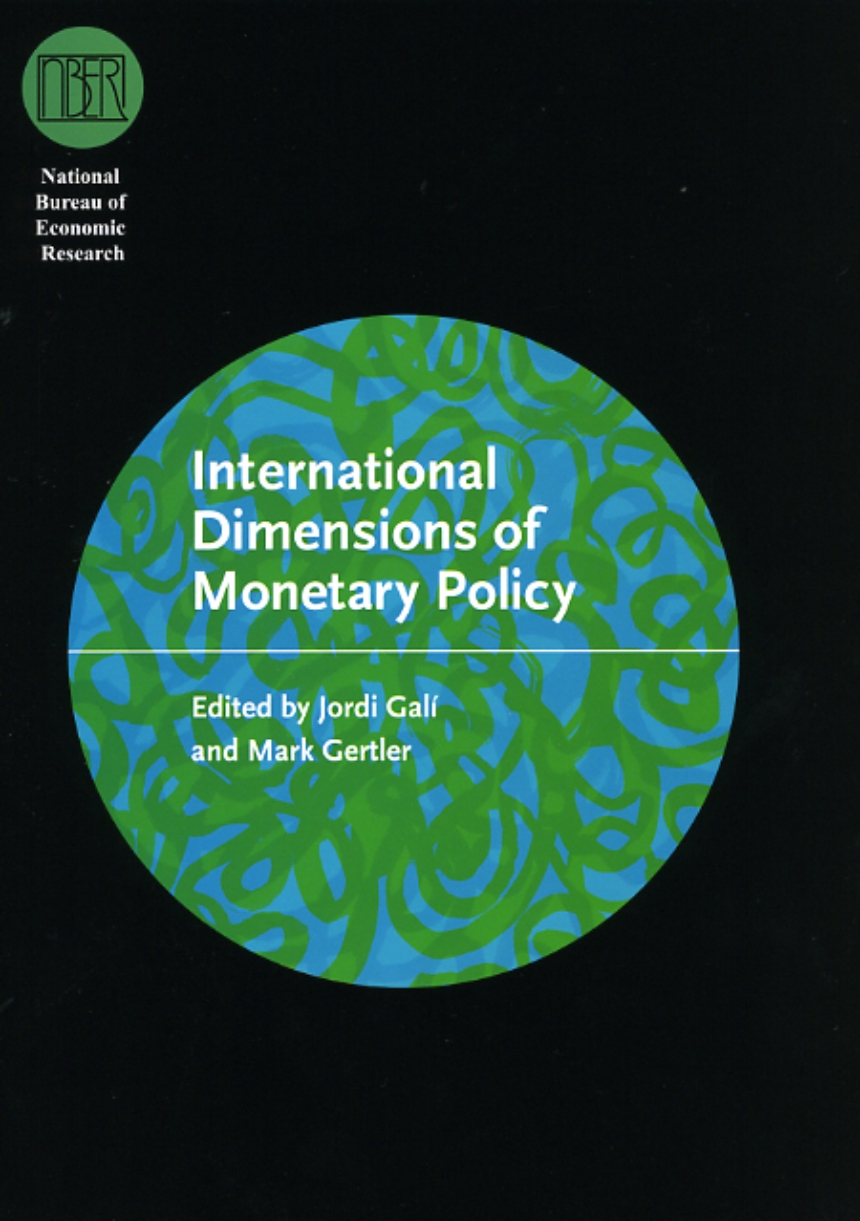International Dimensions of Monetary Policy
United States monetary policy has traditionally been modeled under the assumption that the domestic economy is immune to international factors and exogenous shocks. Such an assumption is increasingly unrealistic in the age of integrated capital markets, tightened links between national economies, and reduced trading costs. International Dimensions of Monetary Policy brings together fresh research to address the repercussions of the continuing evolution toward globalization for the conduct of monetary policy.
In this comprehensive book, the authors examine the real and potential effects of increased openness and exposure to international economic dynamics from a variety of perspectives. Their findings reveal that central banks continue to influence decisively domestic economic outcomes—even inflation—suggesting that international factors may have a limited role in national performance. International Dimensions of Monetary Policy will lead the way in analyzing monetary policy measures in complex economies.
664 pages | 117 line drawings, 34 tables | 6 x 9 | © 2010
National Bureau of Economic Research Conference Report
Economics and Business: Business--Industry and Labor, Economics--Development, Growth, Planning, Economics--International and Comparative, Economics--Money and Banking
Table of Contents
Introduction
Jordi Galí and Mark Gertler
I. Baseline Models for International Monetary Policy Analysis
1. Globalization and Monetary Control
Michael Woodford
Comment: David Romer
2. The Transmission of Domestic Shocks in Open Economies
Christopher Erceg, Christopher Gust, and David López- Salido
Comment: Malin Adolfson
3. International Transmission and Monetary Policy Cooperation
Günter Coenen, Giovanni Lombardo, Frank Smets, and Roland Straub
Comment: Christopher A. Sims
II. Extending the Baseline Models to Address Policy Issues
4. Current Account Dynamics and Monetary Policy
Andrea Ferrero, Mark Gertler, and Lars E. O. Svensson
Comment: Paolo Pesenti
5. Monetary Rules in Emerging Economies with Financial Market Imperfections
Nicoletta Batini, Paul Levine, and Joseph Pearlman
Comment: Frederic S. Mishkin
6. Optimal Monetary Policy and the Sources of Local- Currency Price Stability
Giancarlo Corsetti, Luca Dedola, and Sylvain Leduc
Comment: Philippe Bacchetta
III. Empirical Issues in International Monetary Policy Analysis
7. The Macroeconomic Effects of Oil Price Shocks: Why Are the 2000s so Different from the 1970s?
Olivier J. Blanchard and Jordi Galí
Comment: Julio J. Rotemberg
8. Global Forces and Monetary Policy Effectiveness
Jean Boivin and Marc P. Giannoni
Comment: Lucrezia Reichlin
Rejoinder by Jean Boivin and Marc P. Giannoni
9. Monetary Policy in Europe versus the United States: What Explains the Difference?
Harald Uhlig
Comment: Andrew Levin
10. Globalization and Infl ation Dynamics: The Impact of Increased Competition
Argia M. Sbordone
Comment: Tommaso Monacelli
IV. General Observations
11. The Effects of Globalization on Infl ation, Liquidity, and Monetary Policy
Lucas Papademos
12. Globalization and Monetary Policy: Missions Impossible
John B. Taylor
Panel Remarks
Donald L. Kohn, Board of Governors of the
Federal Reserve System
Rakesh Mohan, Reserve Bank of India
José Viñals, Bank of Spain
Contributors
Author Index
Subject Index
